Consumer interest in transparency puts new demands on processors
With consumers demanding more detailed product information, new technology can help transform processors’ operations.
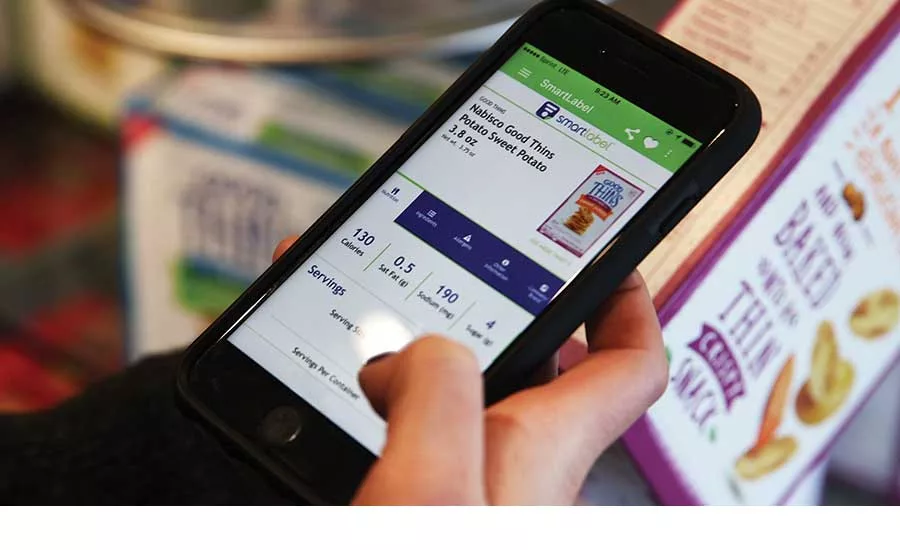
Mondelēz International’s SmartLabel app gives consumers quick and easy access to the information they want to know about their snacks. Source: Mondelēz International.
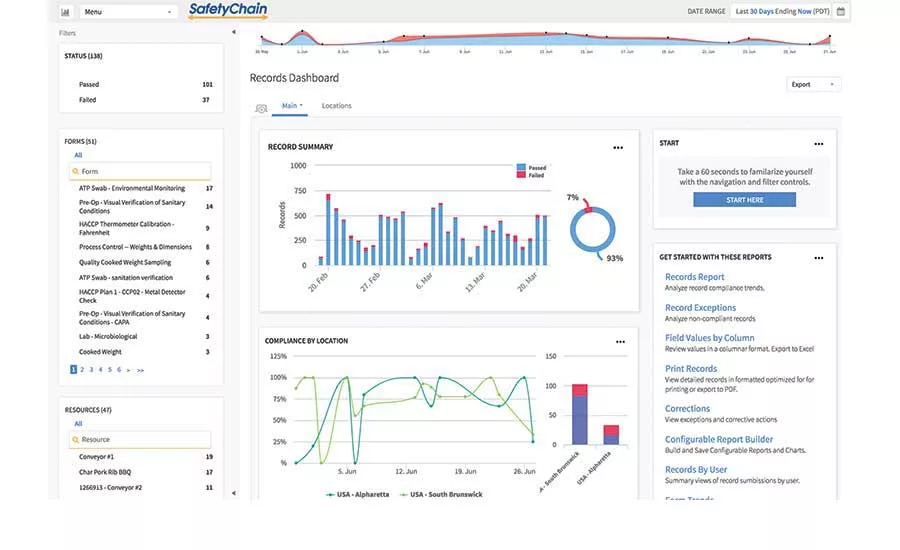
SafetyChain Analytics—part of SafetyChain’s suite of food safety and quality management solutions—turns data into real-time business intelligence for greater transparency and oversight upstream, downstream and internally. Source: SafetyChain.
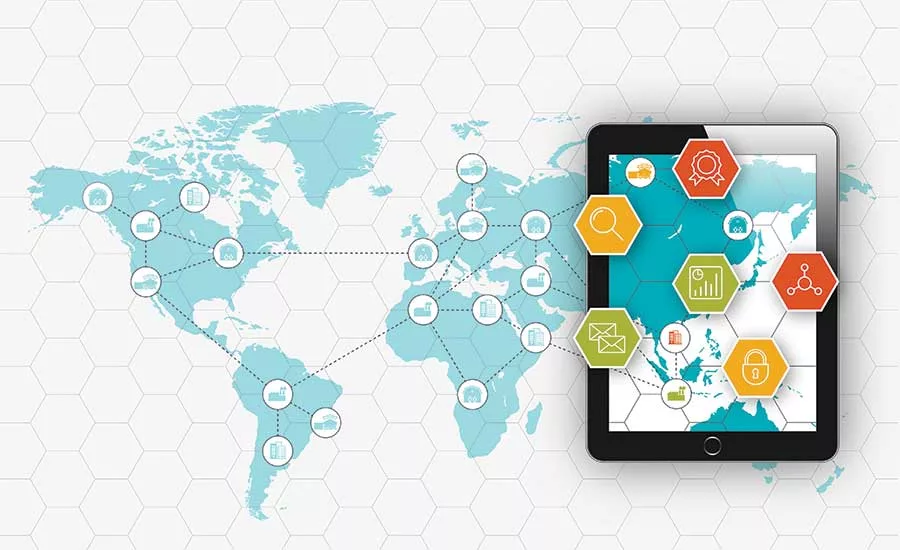
The Transparency-One solution helps brands map their complete product supply chains, peeling back the layers to uncover the origins of a product or ingredient, from farm to fork. Source: SGS Transparency-One.
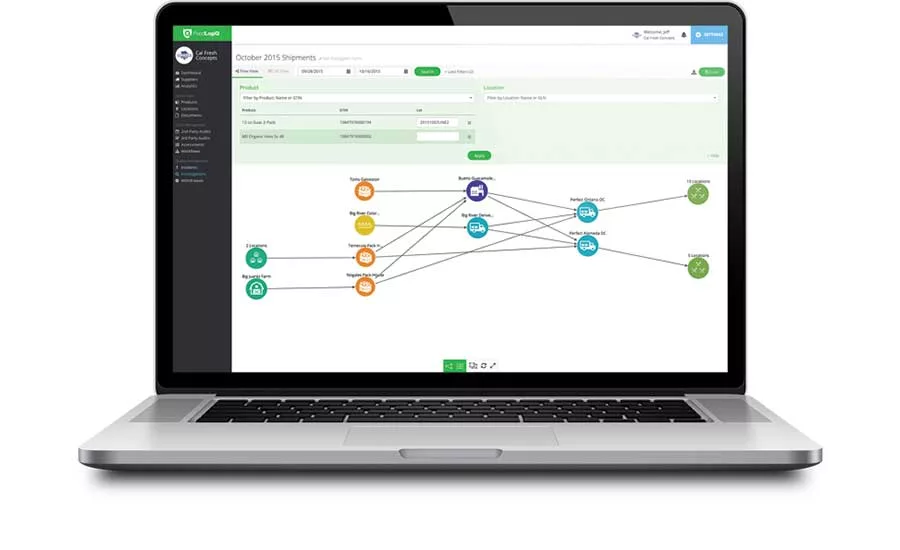
With a quick glance at the FoodLogiQ dashboard, processors can identify their strategic suppliers and who is creating risk. Source: FoodLogiQ.
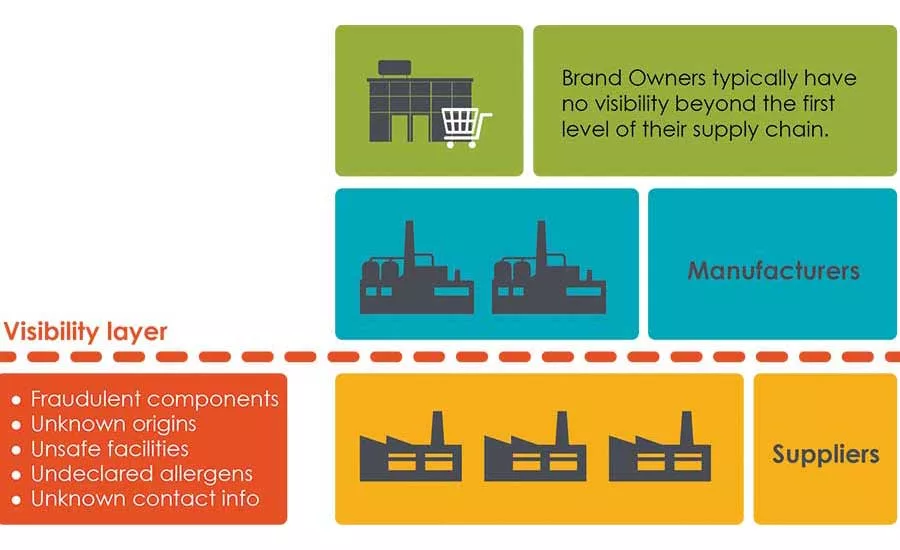
Transparency-One helps businesses discover their supply chains down to the source, achieving the ability to monitor, analyze and search. Source: SGS Transparency-One.
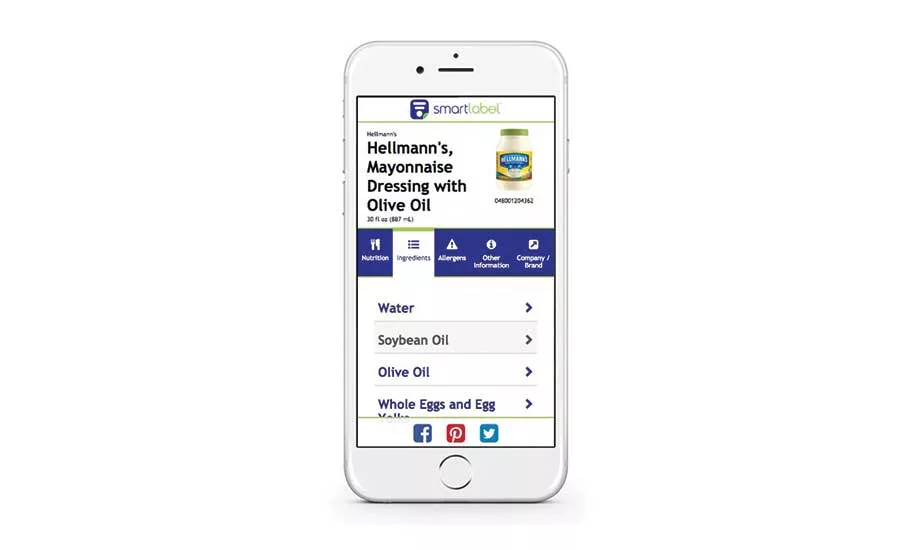
Through online product pages that are accessible by smartphones, tablets and desktops, consumers can find product information organized in a consistent manner. Source: Label Insight.
A seismic shift has happened in the food and beverage industry—consumers have gone from being passive to very much being in the driver’s seat, calling the shots on what they want.
They want to know all the details about a food or beverage product, from A to Z, including what it contains, where those ingredients are from, how the product was processed, how it was handled in shipping and how long it’s been sitting on that shelf. Oh, and also, they want to know the ins and outs of your company, in terms of business ethics, sustainability, corporate social responsibility programs and employee welfare.
“Consumers have become more concerned with the health, quality and ethical responsibility of their purchases,” says Guy Escarfail, vice president of SGS Transparency-One. “Couple this with advances in technology—such as the internet, social media and smartphones—and consumers now have the means to immediately access information about virtually anything.”
For all of these reasons, having transparent operations has become increasingly important for food processors to build trust with consumers. Fortunately, a whole host of solutions have popped up in the past few years that can help processors evolve with this trend.
The transparency shift
If it feels like this consumer shift has happened recently, you are right, and more consumer reports are finding that consumers do, indeed, want increasingly more information about the products they use. For instance, a Deloitte study, commissioned by the Grocery Manufacturers Association (GMA) and the Food Marketing Institute (FMI), found that today’s consumers are going beyond considering the traditional price, performance and convenience values to determine what they buy.
“A new emphasis on health and social responsibility is wrapped in consumer expectations of transparency,” says Julie Savoie, director of industry affairs for the GMA. “It is no longer sufficient to simply list an ingredient. Consumers want to know what that ingredient is, where it came from and why is it in the product they are considering.”
This might not be consumers just getting pickier—a recent Wall Street Journal article states that reports of severe allergic reactions to foods like peanuts have increased by nearly five times over the past decade; that’s an increase of 377 percent over the last 10 years.
“Many consumers are driven by health and wellness goals, including special diets and ingredient allergies,” says Ronak Sheth, chief customer officer for Label Insight. “It’s not a fad—transparency from brands is increasingly important to consumers, and they want more than just the required product information on a product’s label.”
Label Insight provides proprietary technology that generates product attribute data and enables consumer packaged goods companies to communicate that information to their customers. The company also has done extensive research in this area to learn what is important to which consumers.
“Our research indicates that millennial moms are leading this move toward digital transparency, and this demographic represents nearly $200 billion in spending power,” says Sheth. “Millennial moms—mothers between the ages of 18 and 34—value transparency more than any other demographic, are significantly more interested in seeking product information through digital channels and are willing to pay more for [quality].”
This group of consumers is technologically savvy and highly connected, since the majority of them grew up with the internet. Sheth says this comfort with modern tools has dispositioned them to gravitating to brands that “get” technology.
The complex supply chain
It would be remiss to blame only consumer taste for this behavioral shift and leave out the industry’s role. To drive down costs and provide affordable food, companies have expanded their networks of ingredient sources.
“In recent decades, the food and beverage industry has become more globally dispersed, resulting in more complex supply chains and a rise in issues of product safety, product fraud and social responsibility,” says Escarfail. “As product and ingredient sourcing goes global, supply chains become larger and more elaborate, leading to situations where, for example, ‘Italian’ tomatoes are grown in China.”
This has led to an increasingly skeptical public, with consumers wanting to hold food manufacturers to their word if they are claiming their products are organic, vegan, kosher or halal.
“Recent stories in the news have highlighted both food safety issues around contaminated products and recalls, as well as false labeling claims, which are fueling the need for transparency,” says Alex Koves, vice president for Mar Kov, which provides Vittles Food Manufacturing Software.
Recalls linked to food that could possibly cause negative health effects are particularly a sore spot for consumers. FoodLogiQ, a company that offers a platform providing food safety, traceability and supply chain transparency, recently surveyed more than 2,000 consumers to gauge brand loyalty and what breaks a consumer’s trust in a brand.
“What we discovered was if a brand experiences a recall leading to consumer sickness, 35 percent of the respondents will avoid this company for a few months and only maybe return after the issue has been resolved,” says Katy Jones, chief marketing officer for FoodLogiQ, “while nearly one-quarter of respondents admitted they would never use the brand again.”
Of course, if consumer health is involved, the issue becomes a much bigger problem than consumer preferences. With the new Food Safety Modernization Act, US companies are now required to maintain certain documents from every supplier to verify their supply chain’s compliance with FSMA. This can include having facility registrations and sanitary transportation records on hand, as well as meeting obligations set out in the Foreign Supplier Verification Programs (FSVP) rule.
“FSMA is having a significant impact on processors, importers and transporters,” says Dan Bernkopf, vice president of FSQA applications for SafetyChain. “By looking at both FSVP and the Sanitary Transportation Rule, FDA is solidifying its precept of preventative controls by making importers responsible for [the] food safety of the product they import and transporters responsible for the products they carry.”
Bernkopf says to be compliant with these regulations, processors need to maintain documents, records and data with real-time reporting, which can be obtained by electronically capturing and reporting key identifier information throughout the supply chain.
“Most companies don’t even have an accurate list of suppliers with whom they do business, and many times, a supplier’s information reflects that of the broker,” says Randy Fields, CEO and chairman of Park City Group and ReposiTrak Inc., which offers food supply chain management solutions. “Under FSMA, the FDA now has expanded access, and all record inquiries must be answered within 24 hours. Failure to respond to a records inquiry is considered a ‘prohibited act’ and could land a CEO in jail.”
Solutions for transparent operations
For processors looking to build consumer trust by providing more information to the public, there is plenty of consumer-facing technology available. The GMA launched a SmartLabel initiative in 2015, which is a digital disclosure platform providing a number of product details that couldn’t possibly fit on a package label.
“It doesn’t just tell consumers what ingredients are included in products,” says Savoie. “It can explain what those ingredients are, why they’re in the product, what they do and even where they came from. This includes how a food was produced, how animals were treated and how fish were caught.”
The SmartLabel allows consumers to access the information via their preferred method, whether that is by visiting a website, scanning product codes via a smartphone or calling a customer service number. The first company to sign on to this initiative was Mondelēz International. (See “Transparency push at Mondelēz International.”) But the number of participating companies has exponentially grown.
“As of August 1, nearly 10,000 food, beverage, personal care and household products from 450 brands and 29 manufacturers and retailers are using SmartLabel,” says Savoie.
Brands that use the SmartLabel tool can provide the information consumers want through one source, helping to build trust through transparency.
“Consumers can find product information organized in a consistent manner, including allergens, ingredient sourcing practices, third-party certifications, social compliance and sustainability programs, usage instructions, advisories and safe handling instructions, and company and brand information,” says Sheth.
New technology can also help protect your brand by uncovering the origins of a product or ingredient, providing information that tracks the farm-to-fork process.
“The Transparency-One solution helps brands map their complete product supply chains, while our partnership with Blippar connects shoppers to this information,” says Escarfail. “With the Blippar mobile application, shoppers can scan food with their smartphones to check the quality and origins of their purchases. In this way, consumers become truly connected to farmers.”
Smart supply chain
There are a number of new solutions to help update the management and optimization of the growing supply chain. Some of them have the potential to transform very old practices, actually, one of the oldest—agriculture.
Agrian is a system that collects data from growers or their advisors to document their practices in one central location. This information is then shared with their food processors, who can view the raw product’s field data.
“That field data can consist of all the inputs that went into growing the crop, from the type of seed, fertilizers, crop protection products, as well as location [mapping and GPS] and acceptable harvest dates,” says Nish Majarian, CEO of Agrian.
Discovering what your supply chain is doing way upstream can allow for greater control over the safety and sustainability of the end food product. Guy Escarfail from SGS Transparency-One says by having this information at hand, processors can react more quickly to recalls, facilitate regulatory compliance and collaborate more efficiently with suppliers and retailers.
“Stakeholders along the entire supply chain can better understand their operations [by knowing] who supplies their suppliers, where their ingredients come from and what certifications their facilities have,” he says.
Some of the latest tools fall into the Industrial Internet of Things category, by providing real-time data on products via sensors, cloud computing platforms and social media distribution. One particular area of interest is during the transportation phase, particularly with perishable items.
“For grocers and consumers alike, visual inspection has really been the only method for verifying remaining freshness,” says Peter Mehring, chief executive officer of Zest Labs. “But this fallible process is solely of value when detecting notable change in the last few days of the produce shelf life and is [of] little to no use in the earlier stages, such as when produce first leaves a grower’s facility.”
Zest Labs’ Zest Fresh provides quality data from every segment of the supply chain to provide accurate information about the freshness of a product and enables smarter transportation decisions. It uses IoT-enabled temperature sensors to monitor time and temperature throughout the entire supply chain.
“This data is used in combination with product and field information to calculate a ‘freshness metric,’” says Mehring. “This data is analyzed in the Zest cloud, where an algorithm determines the actual measured freshness and delivers preemptive alerts with prescriptive corrective actions whenever it identifies potential mishandling.”
At the plant floor level, Bühler has developed machine- and facility-based management systems with real-time data collection to provide processors with a transparent view of their operations. One of Bühler Aeroglide’s latest developments, AeroPro MC, is a moisture control system, which enables processors to achieve efficiency gains and less waste, without operator adjustments.
“Pairing intelligent, autonomous machine control with robust producer recipe management, producers are able to generate more on-specification products with less energy,” says Douglas Beloskur, product manager, automation, for Bühler Aeroglide. “Sustainability of operations is a core promise to the consumer, ensuring responsible environmental production practices and minimizing waste.”
To combat more nefarious parties, companies can employ anti-counterfeiting technology as an important part of protecting their brands. Systech is helping companies do this with its UniSecure solution, which generates an identification signature from an existing print mark, such as a barcode, which is then stored in the cloud for future authentication.
“If you look at UPC codes microscopically, they’re different,” says Steve Tallant, director of product management and marketing at Systech. “So, we can derive a unique fingerprint for each and every one of those items to individually identify them.”
Traditional serialized barcodes, which are unique and individualized, can still be copied in at-risk markets, allowing counterfeit products to get into the market. But the UniSecure solution ensures the product is not counterfeit and can be applied to any barcode.
However, because each product can be uniquely identified through this technology, this also allows metadata to be associated with individual items.
“If you think of the food lineage of food products, we’re able to put into that metadata whatever information is available,” he says, “ sourcing, country, day it was picked, pesticides used or not used. All of that data is able to be consolidated for that unique item.”
This information can be accessed by scanning and viewing via a smartphone, which presents a product’s unique information. And, he adds, the information about a particular item might be drastically different than the item sitting right next to it.
Achieving operational goals
Employing these technologies can not only help build trust with consumers, it can also help improve operational efficiency. Having supplier visibility through a software-as-a-solution technology platform can quickly inform processors about which suppliers have expired documents, failed audits or racked up the most quality incidents.
“A quick glance at their dashboard in FoodLogiQ will tell them who are their strategic suppliers and who is creating risk,” Jones says. “With this knowledge, they can then set expectations with their suppliers and remain compliant.”
Trace One provides private-label management solutions that allow collaboration between all parties through the product development process, which can help processors keep and gain retail customers.
“These solutions ensure that from product ideation, through to launch, all required information and proof that the retailer needs to gain trust and quality is achieved,” says Shaun Bossons, chief revenue officer for Trace One.
This format can also help companies with efficiency efforts, such as by reducing errors by verifying all essential tasks have been completed. Also, information, such as recipes, ingredients, testing parameters, critical control plans and other statements about the product, can be centralized and validated, creating a historical record that can be provided to the FDA for auditing purposes.
“With a large amount of centralized information that relates to workflow, product, suppliers and other areas of the product development process, it is key to differentiate through insight,” says Bossons. “Receiving alerts and notifications, accessing dashboards and being able to find the correct answer are critical to making the right business decisions quickly.”
He adds that having this insight results in a safely manufactured product. And in the end, that is what everyone involved—processor, retailer, government and consumer—wants.
Transparency push at Mondelēz International
Last February, Mondelēz International launched an app that gives consumers quick access to numerous data points about its products. The company was also one of the first to sign on to the SmartLabel initiative with the GMA.
The app is free and delivers consumers information about more than 1,100 products across the company’s US snack product portfolio. The digital format has been created to be fast, easy to use and able to present real-time data in a consistent way. Shoppers simply scan the barcode or SmartLabel QR code on pack, or search for the individual products online to unlock detailed product information.
Naomi Rosenfeld, marketing director for North America at Mondelēz International, explains more about this app and the company’s overall commitment to wellbeing.
FE: Why was it important for Mondelēz to adopt the SmartLabel?
Rosenfeld: Mondelēz International is one of the first companies that signed on to the SmartLabel initiative following its launch in December 2015 and is now one of the first companies to launch a sponsored SmartLabel app. It’s another example of our commitment to consumers’ focus on wellbeing and listening to their desire for easy access to information about the products they eat.
FE: Is it available on all of the company’s products?
Rosenfeld: More than 1,100 products across Mondelēz International’s US snack product portfolio, including biscuits, crackers, cookies, chocolate, gum and candy, are now searchable through the new “SmartLabel Sponsored by Mondelēz International” app, as well as online at www.smartlabel.org. We’re excited that consumers’ favorite brands from our portfolio are participating, including:
- NABISCO favorites:
- GOOD THiNS crackers
- TRISCUIT crackers
- WHEAT THINS crackers
- RITZ crackers
- belVita breakfast biscuits
- OREO cookies
- CHIPS AHOY! cookies
- GREEN & BLACK’S chocolate
- SOUR PATCH KIDS candy
- SWEDISH FISH candy
- TRIDENT gum
- DENTYNE gum.
FE: How long did it take to compile all the detailed information, and what company-wide effort was needed to obtain all this information? Did different departments within the company have to work together to achieve this goal of transparency?
Rosenfeld: We worked for about six months and involved many different teams at Mondelēz International, including our global data team, IT, e-commerce, regulatory, legal, marketing and our wellbeing teams, among others, so it was a real team effort!
FE: How did undergoing this process help advance transparency efforts within Mondelēz’s operations? Did the company learn anything about itself or its suppliers?
Rosenfeld: As part of the process, we reviewed all of our product descriptions to ensure they were in consumer-friendly terms, plus we improved the way we route our data to better sync it with online and other digital platforms.
FE: How will company operations (such as changing an ingredient, process or supplier) affect the SmartLabel information? Is the info automatically updated? Did the company’s data management systems need to be overhauled to help facilitate this?
Rosenfeld: Since the data is from our own company, we simply upload it to the SmartLabel platform as part of our regular processes. But we’re always looking at opportunities to better use and share the data we do have for platforms such as SmartLabel.
For more information:
Alex Koves, Mar Kov, 416-633-4383,
sales@mar-kov.com, www.foodtracksoftware.com
Dan Bernkopf and Jill Bender, SafetyChain, 888-235–7540,
info@safetychain.com, www.safetychain.com
Douglas Beloskur, Bühler Aeroglide, 919-851-2000,
douglas.beloskur@buhlergroup.com, www.buhlergroup.com
Guy Escarfail, SGS Transparency-One, +33 679 76 24 37,
transparency-one@sgs.com, www.sgs.com/transparency-one
Julie Savoie, Grocery Manufacturers Association, 202-639-5900,
jsavoie@gmaonline.org, www.gmaonline.org, www.smartlabel.org
Katy Jones, FoodLogiQ, 919-484-4400,
info@foodlogiq.com, www.foodlogiq.com
Nish Majarian, Agrian, 559-437-5700,
marketing@agrian.com, www.agrian.com
Peter Mehring, Zest Labs, 408-200-6500,
zestlabs@famapr.com, www.zestlabs.com
Randy Fields, Park City Group and ReposiTrak, 888-327-6187,
info@repositrak.com, www.repositrak.com
Ronak Sheth, Label Insight, 888-787-4386,
learnmore@labelinsight.com, www.labelinsight.com
Shaun Bossons, Trace One,
sabrina.khaida@traceone.com, www.traceone.com
Steve Tallant, Systech, 800-847-7435,
sales@systechone.com, www.systechone.com
Looking for a reprint of this article?
From high-res PDFs to custom plaques, order your copy today!







